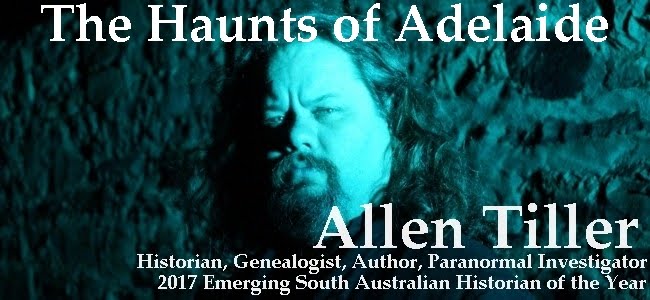Legend Tripping
(first published on the "Eidolon Blog" on
“Let’s go legend tripping!” doesn’t have the same impact as “let’s go ghost hunting!”, but for some ghost hunters, it is exactly what they are doing!
“Whatchoo talkin’ ‘bout Allen?" I hear you say.
What I am talking about is a thing called “ostension”, a term which is explained in the Mirriam-Webster Dictionary as “an act or process of showing, pointing out or exhibiting”. The word comes from the Latin word ‘ostendere’, which means ‘to show’.
Ostension is the act of making an action to explain a word without saying the word, such as “flippin’ the bird" to say…well you know what it means...
Way back last century, in 1983, an article was published titled “Does the word 'dog’ bite? Ostensive Action as a Means of Legend Telling” by folklorists, Linda Degh and Andrew Vazsonyi.
Basically this article laid out the foundations of what folklorists termed “legend tripping”, the act of engaging in “playacting” involving supernatural elements, of which ghost hunting is the most common, but also of which Bigfoot hunting, werewolf hunting and other aspects of the paranormal fall under.
In a book published this century, “Aliens, Ghosts and Cult: Legends We Live” by Bill Ellis. Mr Ellis, a folklorist delves further into the world ostension, pointing out that many ghost hunters take themselves quite seriously, and the ‘work’ they do and would never consider that they are, in fact, playacting.
There are numerous ghost hunting teams that venture out into the dark with their gadgets, try and confront supernatural beings or ghosts with an onslaught of questions, then return to the safety of their home, secure in the knowledge they have taken on the unknown, and won. There is no research into the locations history, how their equipment actually works, what it is used for in the real world, and its actual capabilities. There is no investigation into natural explanations, weather patterns, psychology or anything else for that matter – it is in essence, exactly what the folklorists state it is “play acting”.
Bill Ellis wrapped it up rather well in his previously mentioned book with this quote (ghost hunters) "venture out to challenge supernatural beings, confront them in consciously dramatized form, then return to safety. ... The stated purpose of such activities is not entertainment but a sincere effort to test and define boundaries of the 'real' world.' "
Back to the article by Degh and Vazsonyi. Essentially what the writers are trying to convey is that if a “legend” is widely known and exposed to a wide audience, some members of that audience will engage themselves in actualising or ‘living’ the ‘legend’ or parts of the narrative associated with it. In the paranormal industry, this would be the aspect of ghost hunting that involves persons who want to copy their favourite ghost hunting TV star and live out what they see on TV, for the thrill and for the status.
There is a distinct difference between the casual ghost hunter and the serious paranormal investigator, but at the end of the day, even the serious paranormal investigator can engage in “legend tripping”, and the casual ghost hunter can become a serious paranormal researcher and investigator, but at the end of the day we have to ask ourselves, are we getting involved in other people’s legends when we investigate the paranormal and living out their expectations of what will happen, or are we going in armed with research, knowledge and no expectations?
http://www.merriam-webster.com/dictionary/ostension







